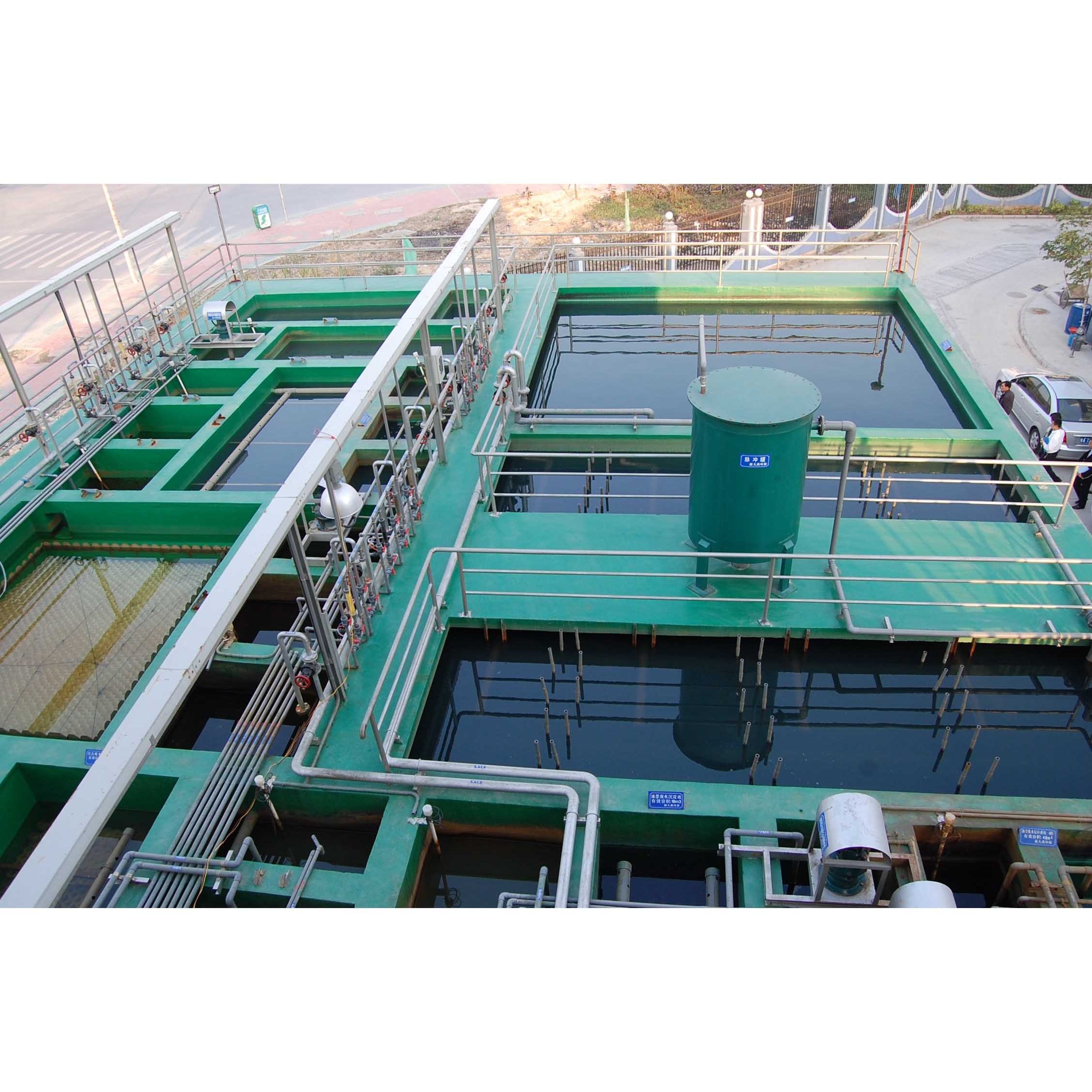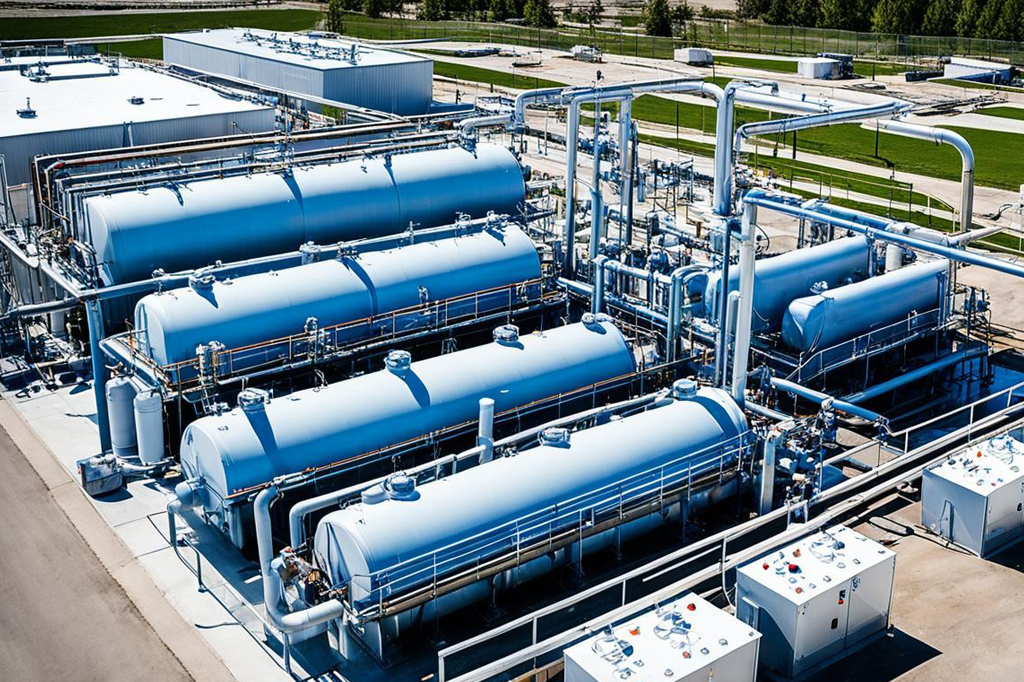Industrial Waste Water Treatment-- Advanced Solutions for Cleaner Effluents
Industrial Waste Water Treatment-- Advanced Solutions for Cleaner Effluents
Blog Article
Key Strategies in Hazardous Waste Water Therapy Procedures
The therapy of commercial wastewater is a critical facet of environmental monitoring, involving a variety of methods made to minimize the effect of impurities. From the fundamental physical techniques that divide solids to the advanced chemical and biological procedures that target particular pollutants, each strategy plays a vital role in attaining water high quality requirements. Developments in modern technologies such as membrane purification and advanced oxidation processes supply innovative options for boosting treatment efficacy. Comprehending exactly how these approaches adjoin and their implications for sustainability elevates important questions concerning the future of wastewater management in industry.
Physical Therapy Approaches
How effectively can physical treatment techniques attend to the intricacies of commercial wastewater? Physical treatment methods play a crucial duty in the preliminary phases of wastewater administration, focusing mainly on the elimination of solids and large particulates. Methods such as filtration, sedimentation, and flotation are essential for reducing the focus of suspended solids, thus enhancing the effectiveness of succeeding treatment procedures.
Sedimentation involves the gravitational settling of solids, enabling the splitting up of heavier materials from the wastewater. This technique is specifically effective in clearing up water prior to chemical or organic treatments. Filtration, on the other hand, uses various media to record particle issue, making certain that smaller impurities are eliminated. This technique can be tailored to fit various kinds of industrial effluents, generating more clear effluent streams.
Additionally, flotation protection techniques, which utilize air bubbles to raise suspended solids to the surface for elimination, work in treating wastewater with high concentrations of fats, oils, and greases. In general, physical treatment approaches serve as a vital primary step in the detailed management of commercial wastewater, guaranteeing that the load on succeeding treatment stages is reduced and enhancing total treatment efficacy.
Chemical Therapy Methods
While physical treatment techniques lay the groundwork for reliable wastewater administration, chemical therapy methods are important for addressing the a lot more complex pollutants typically located in industrial effluents. These techniques make use of various chemical agents to speed up, counteract, or oxidize dangerous substances, making certain a much more complete removal of pollutants.
One typical approach is coagulation and flocculation, where chemical coagulants such as aluminum sulfate or ferric chloride are contributed to promote the gathering of suspended fragments. This process improves solid-liquid separation, minimizing turbidity and boosting water high quality. In addition, neutralization processes are employed to adjust the pH of wastewater, making use of acids or bases to counteract acidic or alkaline streams, specifically.
Oxidation-reduction responses play a critical role in derogatory natural contaminants and virus. Chemical oxidants like ozone, hydrogen, or chlorine peroxide are utilized to damage down intricate organic substances, making them much less damaging or more biodegradable. Advanced oxidation procedures (AOPs) integrate multiple oxidation strategies to boost contaminant elimination effectiveness.
Biological Treatment Processes
The efficiency of wastewater treatment is substantially improved by organic therapy processes, which harness the natural metabolic activities of microbes to break down organic issue and remove pollutants. Industrial Waste Water Treatment. These processes mainly entail cardiovascular and anaerobic food digestion, each customized for specific sorts of wastewater
Aerobic therapy procedures make use of oxygen to sustain microbial growth, advertising the break down of organic contaminants right into co2 and water. Typical techniques consist of triggered sludge systems, where aeration containers promote the mixing of wastewater with bacteria, and trickling filters, which encourage biofilm advancement on media surfaces.
Conversely, anaerobic treatment procedures happen in the lack of oxygen, utilizing anaerobic bacteria to break down organic issue, causing biogas production, find more info an eco-friendly power resource. Anaerobic digesters are typically utilized in commercial setups for this purpose, efficiently decreasing the quantity of sludge while generating valuable biogas.
The selection of an organic therapy method relies on wastewater qualities, therapy goals, and regulative standards. The integration of biological processes in wastewater treatment not just improves toxin elimination effectiveness yet additionally promotes sustainability by lessening chemical use and supporting source recuperation.
Advanced Oxidation Processes

Usual AOP strategies consist of Fenton's reagent, ozonation, and photocatalysis. Fenton's reagent, a combination of hydrogen peroxide and ferrous iron, catalyzes the formation of hydroxyl radicals, making it effective for treating wastewater having phenolic substances and various other stubborn compounds. Ozonation utilizes ozone as a powerful oxidant, with the ability of breaking down a broad array of organic contaminants while concurrently disinfecting the effluent. Photocatalysis employs light-activated catalysts, such as titanium dioxide, to enhance oxidation responses and eliminate contaminants.
AOPs offer numerous advantages, consisting of decreased sludge production and the capability to deal with wastewater with high concentrations of organic pollutants. The execution of AOPs requires cautious consideration of operational specifications and cost-effectiveness, guaranteeing that these advanced strategies are appropriately incorporated right into existing wastewater therapy systems.
Membrane Purification Technologies

Microfiltration works for getting rid of suspended germs and solids, while ultrafiltration targets smaller sized natural particles and infections. Nanofiltration bridges the void between ultrafiltration and turn around osmosis, efficiently getting rid of natural substances and divalent ions. Discover More Reverse osmosis gives the highest degree of filtration, made use of mainly for desalination and removing mono-valent ions.
Membrane innovations offer many advantages, consisting of reduced power consumption compared to conventional treatment methods, modular style for scalability, and the capacity for water healing and reuse. Obstacles such as membrane layer fouling and the requirement for normal maintenance have to be dealt with to make certain system effectiveness. On the whole, membrane layer purification modern technologies represent a vital component of modern industrial wastewater therapy techniques, promoting sustainability and resource conservation in water management.
Conclusion
To conclude, commercial wastewater therapy uses a varied variety of techniques, including physical, chemical, organic, and advanced methods. Each method plays an image source important function in properly attending to numerous impurities, enhancing water top quality, and advertising source sustainability. The integration of these techniques fosters a detailed treatment method, making sure that commercial effluents fulfill governing requirements while lessening environmental impact. Continued improvements in these methods will certainly additionally boost the performance and effectiveness of wastewater treatment processes in commercial settings.
The therapy of industrial wastewater is a crucial element of ecological management, involving a range of methods created to reduce the impact of impurities.Exactly how efficiently can physical treatment approaches deal with the complexities of industrial wastewater?Advanced oxidation processes (AOPs) represent an innovative approach in industrial wastewater treatment, designed to successfully deteriorate organic contaminants that are often immune to standard treatment approaches (Industrial Waste Water Treatment).In conclusion, industrial wastewater therapy employs a diverse selection of techniques, consisting of physical, chemical, organic, and advanced methods. Continued developments in these approaches will certainly further boost the efficiency and effectiveness of wastewater treatment procedures in commercial setups
Report this page